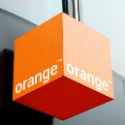Orange joins towerco spinout crowd
News of a fully independent masts company fails to prevent share-price dip as markets react to steep profit downturn in Spain.

Orange CEO Stéphane Richard has at last unveiled a plan to spin out the Group's tower assets.
Dubbed "Totem," a "fully independent and dedicated management team" is to be appointed in the first half of this year. The idea is to launch operations before 2022.
Richard, unsurprisingly, is not interested in spinning out Totem simply to sell the whole thing à la Telefónica's Telxius. In a fairly recent interview with the Financial Times he pointedly noted that there was "something smarter to do than just selling your towers to Cellnex."
No, the CEO wants to keep Totem within the Orange fold, although that doesn't seem to rule out at least a partial sale, or perhaps even an IPO – à la Vodafone's Vantage Towers – somewhere down the line.
"Passive mobile infrastructure is a core asset for Orange … and we are determined to keep these strategic assets within the scope of the Group," said Richard in a prepared statement.
He added that the Group's towers represented "a long-term industrial view and an essential asset in guaranteeing Orange's independence," as well giving Orange a base that can help "foster sustainable economic performance."
Totem by numbers
Orange's towerco will initially comprise around 25,500 thousand macro sites, 17,000 of which are on its home turf in France, and around 8,000 in Spain. They are the two largest countries where Orange is present.
The colocation rate for the combined assets in France and Spain is targeted to increase from 1.3x in 2020 to 1.5x by 2026. Up to 3,000 sites are expected to be constructed over an eight-year period based on demand from Orange.
Based on the scope of sites and the terms of the Master Service Agreement, with Orange as anchor tenant, the towerco's revenues would have apparently exceeded €500 million in 2020 with EBITDAaL close to €300 million (US$363 million), around two thirds of which would have been generated in France.
Want to know more about 5G? Check out our dedicated 5G content channel here on Light Reading.
This represents a margin of about 57%, including maintenance costs of about 5% of the TowerCo's revenues.
The Group, however, is apparently exploring the possibility of integrating other passive mobile infrastructure assets from within Orange's European footprint in order to bolster Totem's value.
Aside from France and Spain, Orange's European segment covers Belgium, Luxembourg, Moldova, Poland, Romania and Slovakia.
Pain in … (yes, you've guessed it)
Were it not for some Spanish anguish, Orange would have posted a fairly reasonable set of Q4 and full-year 2020 financials, and perhaps avoided slight share-price squeeze in early morning trading.
Revenues there continued to deteriorate in Q4, down nearly 9% year-on-year, to €1.2 billion ($1.45 billion). This was due in part to pandemic-induced reductions in roaming revenues. A dilution of ARPO (average revenue per offer), caused by Orange Spain's repositioning in the low-cost segment during H2, was another factor.
For the full year, the top-line in Spain suffered a 5.9% drop to €4.96 billion ($6 billion) compared with 2019. EBITDAal meanwhile slumped 13%, to €1.43 billion ($1.73 billion), over the same period.
At a Group level, full-year turnover and EBITDAal were fairly stable at €42.3 billion ($51.13 billion) and €5.5 billion ($6.65 billion) respectively.
— Ken Wieland, contributing editor, special to Light Reading
Read more about:
EuropeAbout the Author(s)
You May Also Like



.jpg?width=300&auto=webp&quality=80&disable=upscale)








